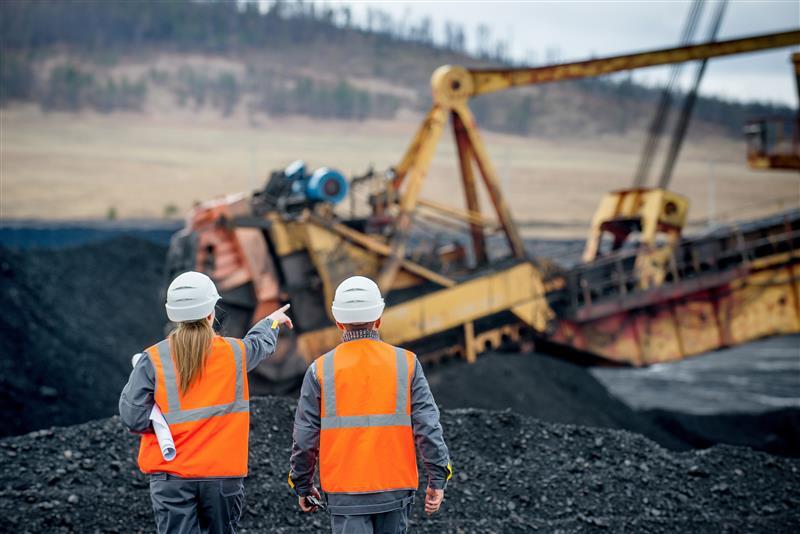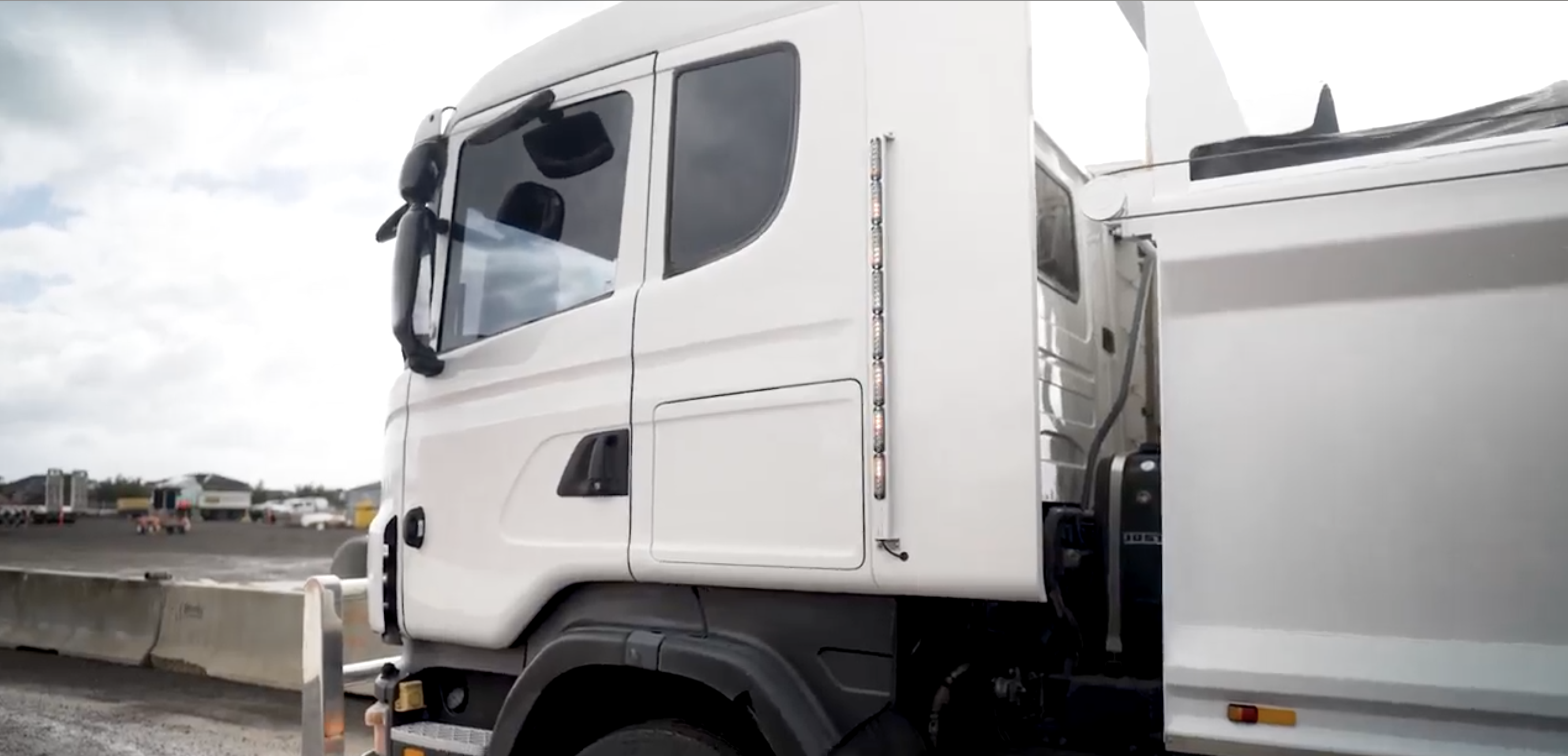MAX-SAFE Rear Loader Pedestrian Protection increases safety for VRUs
One of Australia’s recycling giants has become the first company in Australia to implement an innovative AI camera solution to protect unaware VRUs...
Three Australian civil construction giants – Seymour Whyte, BMD Constructions and McConnell Dowell – have trialled the latest MAX-SAFE AI VRU solutions for heavy vehicles in readiness for likely new government contract safety standards.
Construction vehicles have numerous blinds spots and globally have contributed dis-proportionately to the injury and death of vulnerable road users, namely cyclists and pedestrians. The same holds true for Australia.
In early 2023, Major Roads Projects Victoria (MRPV) signalled that Pedestrian Protection would be a priority for vehicles working on their jobs.
The MAX-SAFE SideViewTM solution, developed by SGESCO-MAX, is designed to protect pedestrians and staff around heavy vehicles. It comprises of an AI camera mounted on the side of the vehicle (left and or right side) with optional safety features including external and internal flashing warning lights and external and internal spoken alerts.
BMD Constructions was the first to trial and prove the efficacy of MAX-SAFE SideView as part of a road upgrade project in Victoria. The solution was installed initially on the left-hand side of a Hino 300 Tipper, with the camera activating when the left-hand indicator was applied and the steering wheel turned 25m radius turning manoeuvre.
When a person was detected within a programmed zone beside the truck, an audio alert was played outside of the truck with the message: “Caution, vehicle turning left.” At the same time, an LED light bar flashed on the left-hand outer side of the vehicle. These external alerts are designed to prompt the VRU to move to a safe location away from the truck.
Inside the cabin, when a pedestrian was detected, a red light flashed on the dashboard and an audible message played, “Pedestrian left.” By making the driver aware of what was on the outside of their vehicle, drivers were able to take appropriate actions. The solution was later installed on a larger tipper truck. Both vehicles operated onsite at project work areas and on roads used by regular traffic, with several schools, kindergartens and footpaths near where heavy vehicles were moving.
Seymore Whyte became the second company in Australia to trial the AI MAX-SAFE SideView to prove its efficacy in making roads and civil construction safer for cyclists, pedestrians and staff around heavy vehicles.
They had identified left-hand side blind spots as a major issue for right-hand drive vehicles. At the same time, they were keen to trial a solution that would illuminate blind spots on the sides of a vehicle, particularly when turning corners, changing lanes or taking off from a stationary position.
The MAX-SAFE SideView solution was trialled as part of Seymour Whyte’s Major Roads Projects Victoria (MRPV) contract for the 5 km Healesville-Koo Wee Rup Road Upgrade (South), approximately 75 mins south east of Melbourne central.
This was a semi-rural area with sections of road being at 100km/h (lowered in parts during construction) with cyclists sharing the road with vehicles – a significant risk to VRUs.
McConnell Dowell was also keen to equip a HINO 500 Water Cart truck with the MAX-SAFE SideView solution.
Their work for the MRPV at the Epping Rd Upgrade Project at Wollert Victoria, saw the Water Cart being extensively utilised not only onsite, but also on general roads as it travelled for refills.
During the period of this trial, the heavy vehicle operator reported that the system successfully detected and alerted an onsite MCD worker as well as a local cyclist during left turn manoeuvres.
Following these three trials conducted over the last 12 months, other civil construction companies, including CPB Constructions and Downer, have begun considering the MAX-SAFE SideView AI safety solution for their heavy vehicles.
OUTCOMES OF THE TRIALS
The solution proved to be a beneficial safety aid on all trucks, in all locations and for the drivers and VRUs external to the vehicles, delivering safer outcomes and in some instances, saving injuries and lives during the trial period.
The trials highlighted that for VRUs to be safer around heavy vehicles, a dual system is required – one that alerts drivers to people in their blinds spots, and one that alerts people that they are in a vehicle’s blind spot and at risk of injury. With these alerts, both parties can take preventative measures to avoid interaction.
Key attributes of MAX-SAFE SideView that were of value were:
According to Scott McPherson, Managing Director of SGESCO-MAX, not only did this MAX-SAFE AI safety solution improve the safety of heavy vehicles working on civil projects to the benefit of the public, but it also improved safety for construction company staff.
“It highlighted to drivers and site workers when their movements around the vehicles onsite were placing them in the vehicle’s blind spot. This was an important awareness message for staff to take greater responsibility for their personal safety and to appreciate the visibility limitations that drivers face,” said Scott.
As Roads Australia CEO, Ehssan Veiszadeh, noted in May 2024: "The industry has seen an unacceptable spike in the number of incidents, severe injuries and fatalities impacting road workers, indicating the urgency to enhance the safety of road workers together with the public moving throughout.”
Scott added that in some countries, governments have legislated for new safety features on construction vehicles, such as lower cabs and bigger windows, while others have asked industry to be proactive in introducing stronger safety measures.
“In the UK, the Construction Logistics and Community Safety (CLOCS) Initiative reduced cyclist deaths by 47% within a few years. It has since become evident that continual advancement of safety standards is necessary to minimise road trauma,” he said.
In Australia, the NRSPP (National Road Safety Partner Program) – an Australian industry initiative has been instrumental in developing the CLOCS-A standards for Australian organisations to voluntarily adopt.
“With numerous infrastructure projects scheduled in the coming decades, along with LGAs supporting active transport options, the risk of accident or injury to VRUs is ever present. In parallel, every civil construction company has safety as a core value,” Scott said.
“Based on the successful trials of our innovative camera-based safety technology, these construction companies have the ideal and reliable solution to meet future tender safety requirements, as various government agencies seek to reduce avoidable VRU accidents and fatalities on roads and worksites.”
Key Benefits
The MAX-SAFE SideView™ solution

One of Australia’s recycling giants has become the first company in Australia to implement an innovative AI camera solution to protect unaware VRUs...
.png)
Every week on every suburban street in Australia drives a waste management truck, making them the most common heavy vehicle that Vulnerable Road...

Australia’s resource sector, which employs around 320,000 people, accounts for over 60% of our export revenue. As a key pillar of Australia’s...
